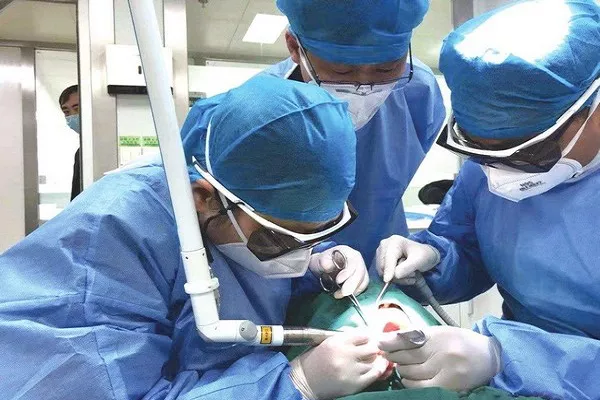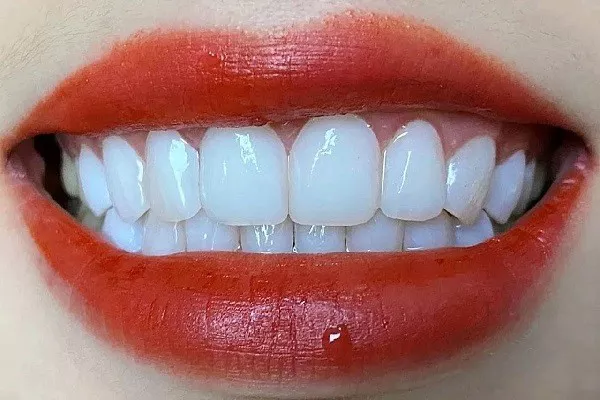Gum disease is a common dental problem that affects millions of people worldwide. It is caused by bacteria that accumulate on the teeth and gums, leading to inflammation, bleeding, and eventually tooth loss if left untreated. While regular brushing and flossing can help prevent gum disease, sometimes a more thorough approach is needed to remove stubborn buildups of bacteria and plaque. This is where deep cleaning of the gums, also known as scaling and root planing, comes in.
What is deep cleaning of the gums?
Deep cleaning of the gums, or scaling and root planing, is a non-surgical procedure performed by a dentist or dental hygienist to remove calculus (hardened plaque) and bacteria from the teeth and gums. The procedure involves two main steps: scaling and root planing.
1. Scaling
Scaling involves using special instruments to remove calculus and plaque from the surfaces of the teeth and underneath the gum line. The dentist or dental hygienist will use a scaler to scrape away the buildup of plaque and calculus, which can be difficult to remove with regular brushing and flossing alone.
2. Root Planing
Root planing is the process of smoothing out the rough surfaces of the tooth roots. This helps to remove any remaining bacteria and plaque that may have accumulated in the crevices of the teeth or below the gum line. By smoothing the surface of the tooth roots, it makes it harder for bacteria to stick to them, reducing the risk of further infection.
Benefits of Deep Cleaning of the Gums
1. Improved Gum Health
Deep cleaning of the gums can help improve gum health by removing the bacteria that cause gum disease. This can prevent further damage to the gums and reduce the risk of tooth loss.
- Reduced Inflammation
Deep cleaning of the gums can reduce inflammation in the gums, which can be painful and uncomfortable. This can improve overall oral health and make brushing and flossing easier.
- Protects Teeth Roots
Gum disease can cause the gums to recede, exposing the roots of the teeth. This can lead to sensitivity and even tooth loss. Deep cleaning of the gums can help protect the roots of the teeth and prevent further damage.
- Prevents Gum Disease Progression
Regular deep cleaning of the gums can prevent gum disease from progressing to more advanced stages, where it can cause irreversible damage to the gums and teeth.
2. Fresher Breath
Bacteria that accumulates on the teeth and gums can also cause bad breath. Deep cleaning of the gums can help remove these bacteria, leaving your mouth feeling fresher and cleaner.
- Eliminates Bacteria
Deep cleaning of the gums can eliminate the bacteria that cause bad breath, leaving your mouth feeling fresh and clean.
- Removes Tartar Buildup
Tartar buildup on the teeth and gums can also contribute to bad breath. Deep cleaning of the gums can remove this buildup, reducing bad breath.
- Better Oral Hygiene
After deep cleaning of the gums, patients are more likely to maintain good oral hygiene habits, including regular brushing and flossing, which can help prevent bad breath in the future.
3. Prevents Tooth Loss
Gum disease is a leading cause of tooth loss in adults. By removing the bacteria that cause gum disease, deep cleaning of the gums can help prevent tooth loss and keep your teeth healthy for longer.
- Treats Gingivitis
Deep cleaning of the gums is highly effective at treating gingivitis, an early stage of gum disease. Treating gingivitis early can prevent further damage to the gums and teeth.
- Prevents Periodontitis
Left untreated, gingivitis can progress to periodontitis, a more advanced form of gum disease that can cause irreversible damage to the gums and teeth. Deep cleaning of the gums can prevent this progression.
- Reduces Tooth Mobility
Tooth mobility is a common symptom of advanced gum disease. By removing the bacteria that cause gum disease, deep cleaning of the gums can reduce tooth mobility and help save teeth from extraction.
Keep in Mind:
If you’re scheduled for a deep cleaning of the gums, it’s important to know what to expect before, during, and after the procedure. Here are some things to keep in mind:
- Before the Procedure
Your dentist may recommend that you take an antibiotic before the procedure to prevent infection. You should also avoid eating or drinking anything for several hours beforehand, as this can interfere with the procedure.
- During the Procedure
Deep cleaning of the gums can take between one and two hours to complete, depending on the extent of the buildup. The dentist or dental hygienist will numb your gums with a local anesthetic to minimize discomfort during the procedure. You may feel some pressure or vibration as the instruments are used to remove the buildup, but you should not experience any pain.
- After the Procedure
After the procedure, your gums may be sore and tender for several days. You may also experience some bleeding and swelling. Your dentist may recommend that you use a special mouthwash or rinse to help promote healing and reduce the risk of infection. You should also avoid hard or crunchy foods for several days, as these can irritate the gums.
It’s important to follow your dentist’s instructions carefully after a deep cleaning of the gums to ensure proper healing. You should also maintain good oral hygiene habits, including brushing and flossing regularly, to prevent further buildup of bacteria and plaque.
Deep cleaning of the gums is an important procedure that can help improve gum health, prevent bad breath, and prevent tooth loss. If you’re experiencing symptoms of gum disease, including bleeding gums, bad breath, or tooth sensitivity, it’s important to see your dentist as soon as possible. Your dentist can perform a thorough evaluation of your oral health and recommend the best course of treatment, which may include deep cleaning of the gums. With proper care and regular dental checkups, you can maintain healthy teeth and gums for life.
Recommended reading:
































